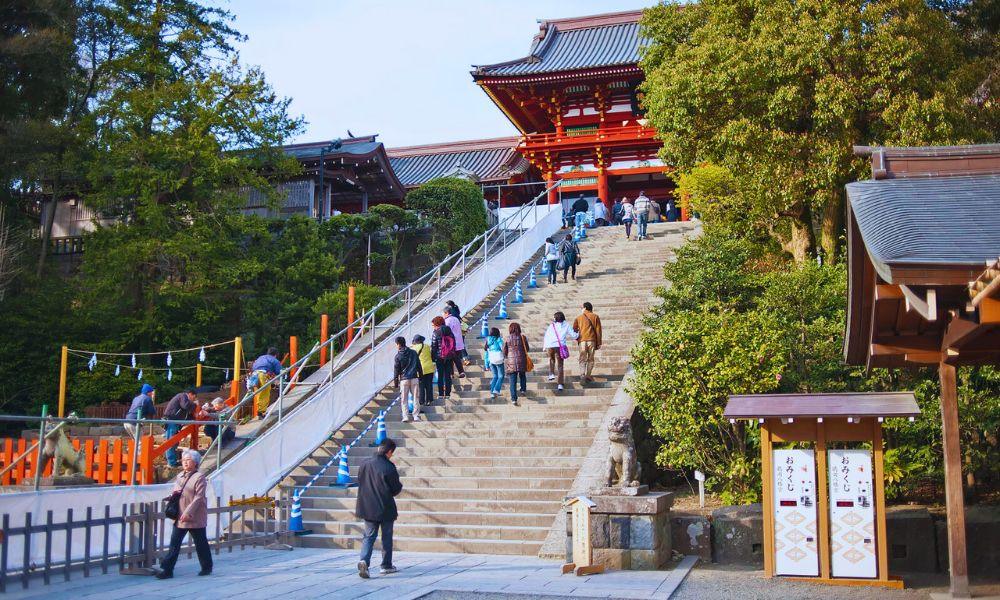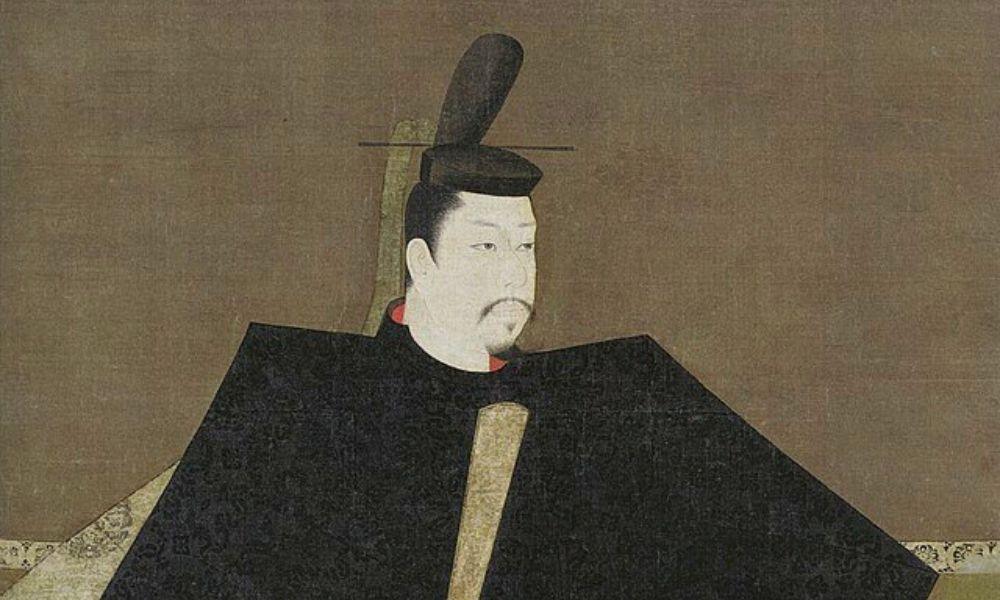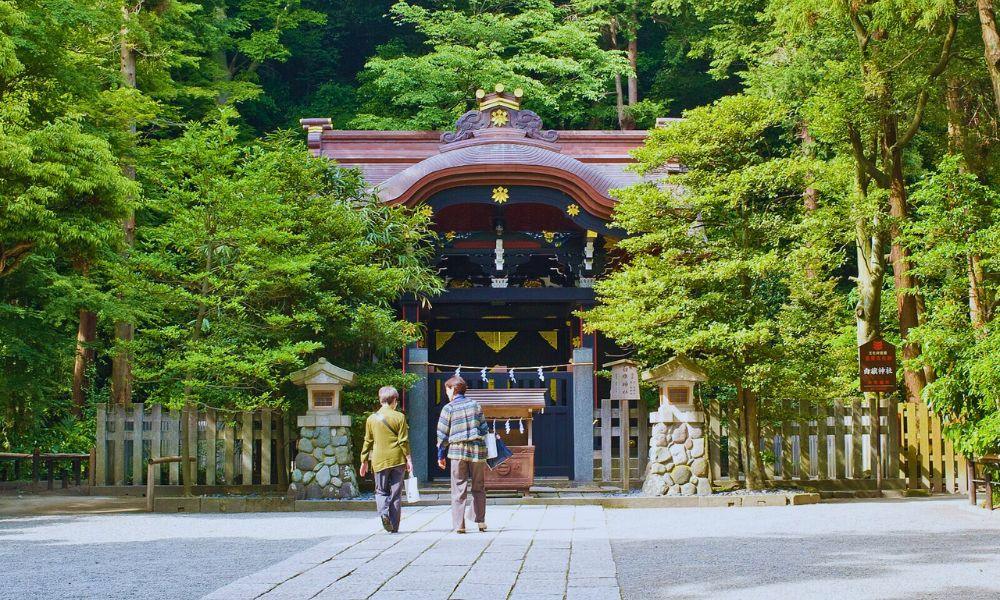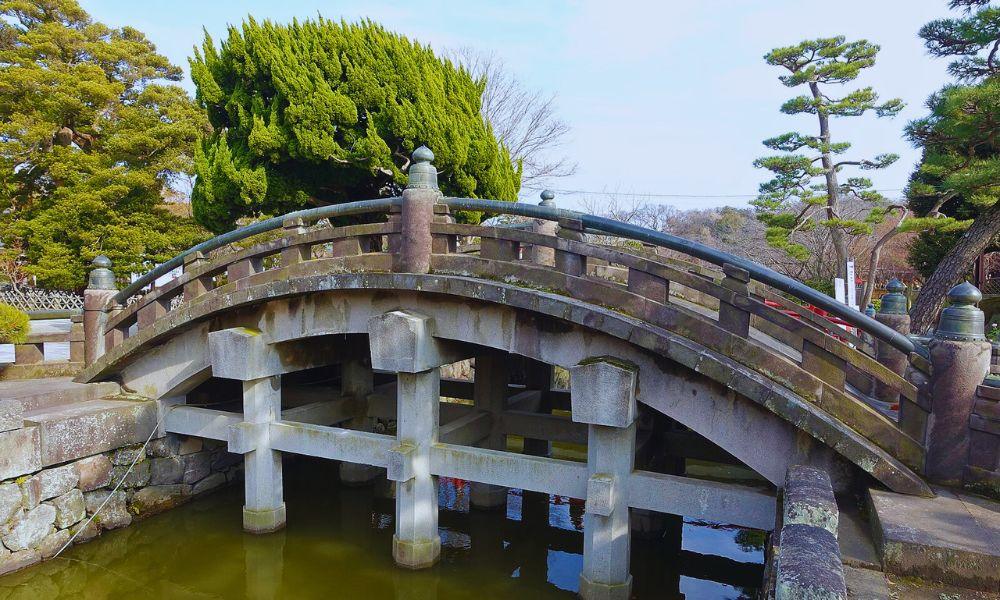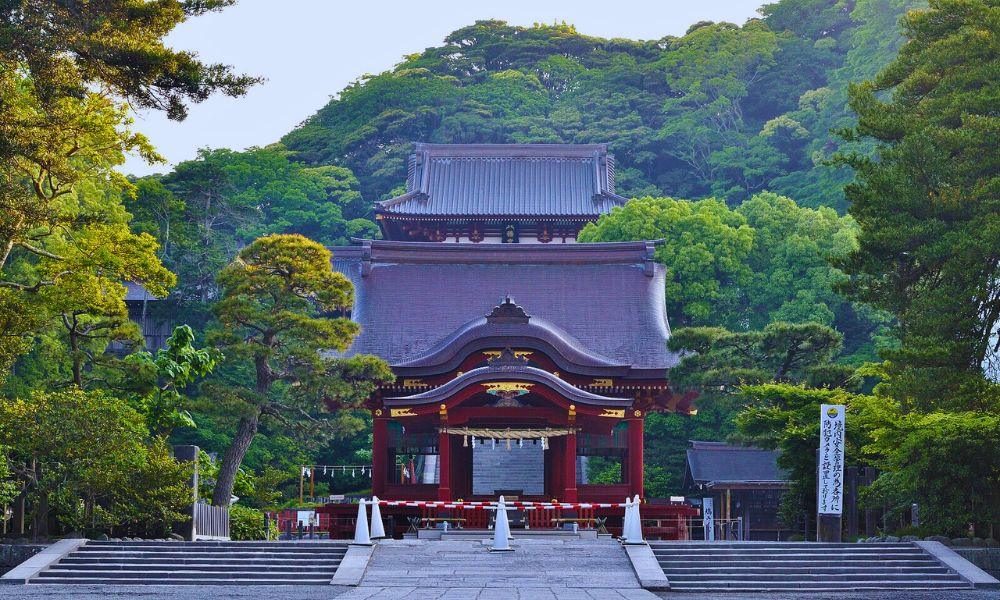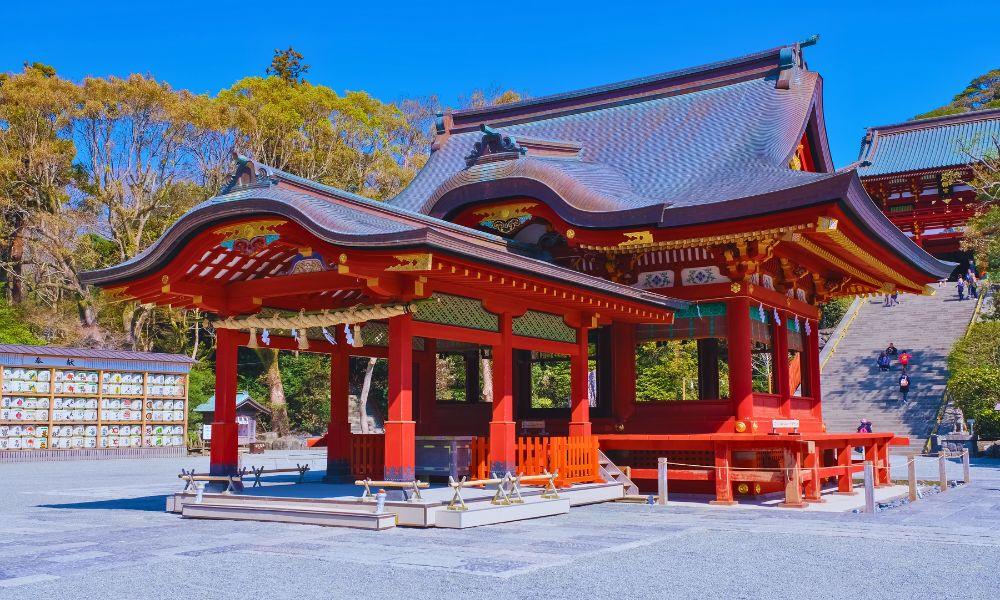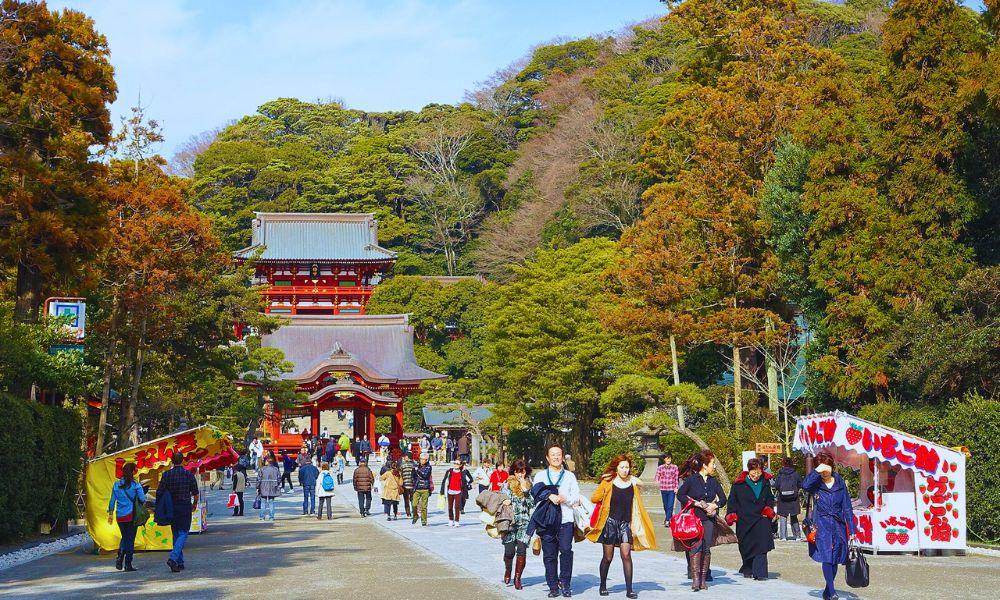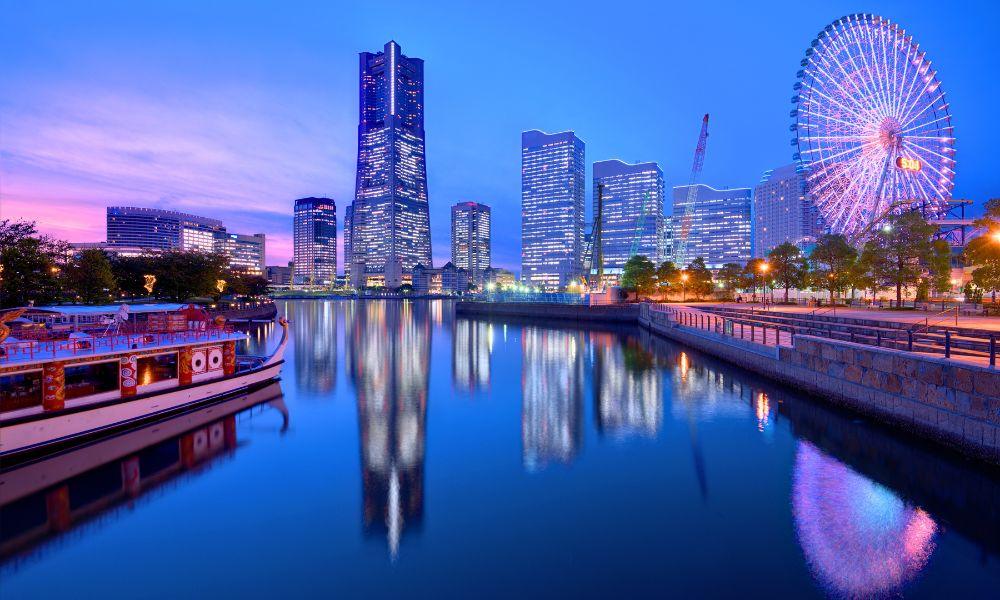When you visit Tsurugaoka Hachimangu in Kamakura, it’s easy to see it as just a beautiful, ancient shrine. But that’s like looking at a movie set without knowing the blockbuster film that was made there. The shrine wasn’t just a place of worship; it was the stage for a real-life family drama of power, betrayal, and love that would make for an epic TV series.
This is the story of Kamakura’s first family—the Minamoto clan—and how their lives are permanently etched into the very stones of the shrine you can visit today.
Before visiting Tsurugaoka Shrine, be sure to check out my perfect itinerary (especially for fellow history buffs!):
The Founder: Minamoto no Yoritomo, The Ambitious Shogun
Everything starts with one man: Minamoto no Yoritomo.
Imagine being a teenager exiled to a remote province after your father was defeated and killed in a civil war. That was Yoritomo’s reality. He spent 20 years living under the watchful eye of his enemies, the ruling Taira clan. But he wasn’t just biding his time; he was planning.
In 1180, he got his chance. He raised his clan’s white banner—the shirahata—and declared war. One of the first things he did after establishing a base in Kamakura was to move an old, respected shrine from the beachfront to its current, grander location. That shrine was Tsurugaoka Hachimangu. For Yoritomo, this wasn’t just a religious act; it was a power move. By placing the shrine at the heart of his new city, he was declaring that his government was divinely blessed. Hachiman, the god of war, was on his side.
Where to Find His Story:
- The whole shrine: The entire layout, from the grand Wakamiya Oji avenue to the Hongu at the top of the hill, was part of his master plan.
- Hataage Benzaiten Shrine: This small shrine on the island is where he symbolically started it all, raising his clan’s flag to pray for victory.
- Shirahata Shrine: The “White Flag Shrine” is dedicated to him. When you stand in front of this striking black building, you’re standing at a place that honors his ambition and his ultimate victory.
The Matriarch: Masako Hojo, The “Nun Shogun”
Yoritomo may have been the founder, but his wife, Masako Hojo, was the one who ensured the dynasty’s power endured. She was no quiet, submissive wife. Her father was initially one of Yoritomo’s jailers, but she and Yoritomo fell in love and eloped, a shockingly bold move for the time.
Masako was a brilliant political mind. While Yoritomo was a military genius, she helped him navigate the treacherous world of court politics. The grand avenue leading to the shrine, Wakamiya Oji, was her idea—a prayer for the safe birth of their first son and heir, Yoriie.
But her story takes a dramatic turn after Yoritomo’s death. When her own sons proved to be weak rulers, she made a series of ruthless decisions to protect the government her husband had built. She sidelined her own children and eventually her own family, the Hojo clan, took over as regents, ruling from behind the scenes.
She shaved her head and became a Buddhist nun but was so politically powerful that she became known to history as the ama-shogun, or the “Nun Shogun.” She was a true force of nature.
Where to Find Her Story:
- Genpei Ponds: She commissioned these ponds, which include the not-so-subtle curse against her husband’s enemies. It shows her fierce, protective nature.
- Wakamiya Oji: The great avenue is a monument to her role as a mother and her desire to secure the future of the Minamoto clan.
The Tragic Heroine: Shizuka Gozen, The Loyal Dancer
Not everyone at the center of the shrine’s story was a warrior or a politician. One of its most enduring legends is that of Shizuka Gozen, a beautiful and famous court dancer.
Her lover was Minamoto no Yoshitsune, Yoritomo’s own younger brother. Yoshitsune was a brilliant general who was instrumental in winning the war for his brother, but his popularity made the paranoid Yoritomo jealous. Yoritomo turned on him, declaring him an outlaw and hunting him across Japan.
Shizuka was captured and brought to Kamakura. The shogun and his court, including Masako, demanded she perform for them. Imagine the scene: she is a captive, her lover is a fugitive, and she is ordered to dance for the very man who wants him dead.
In an incredible display of loyalty and courage, she danced. But the song she sang was not one of praise for the shogun, but a heartbreaking poem about her love for the fugitive Yoshitsune. The song spoke of her longing for her lover as she recalled their happy days together, a stunning act of defiance in the face of absolute power.
Yoritomo was enraged, but it was Masako Hojo, perhaps recognizing a woman’s fierce loyalty, who convinced him to spare her life.
Where to Find Her Story:
- The Mai-den (Dance Hall): This open-air stage in the center of the grounds is the very spot where this legendary performance took place. When you stand there, you can almost hear the music and feel the tension of that dramatic moment.
See Tsurugaoka Hachimangu for Yourself
These stories of ambition, power, and heartbreaking loyalty aren’t just tales in a history book. They happened right on the grounds of Tsurugaoka Hachimangu. Knowing them transforms a simple walk around the shrine into a journey through a real-life epic.
Want to stand exactly where Shizuka danced, or where Yoritomo prayed for victory? My Complete Tsurugaoka Hachimangu PDF Guide is designed to be your companion for this journey. It has a custom-designed map that shows you where each of these stories unfolded, plus a “Who’s Who” guide to keep all the characters straight.
Transform your visit from a simple walk into an unforgettable adventure with my Complete Tsurugaoka Hachimangu PDF Guide.
For just $3, you can download it instantly and turn your visit to Kamakura into an unforgettable adventure into the past.
